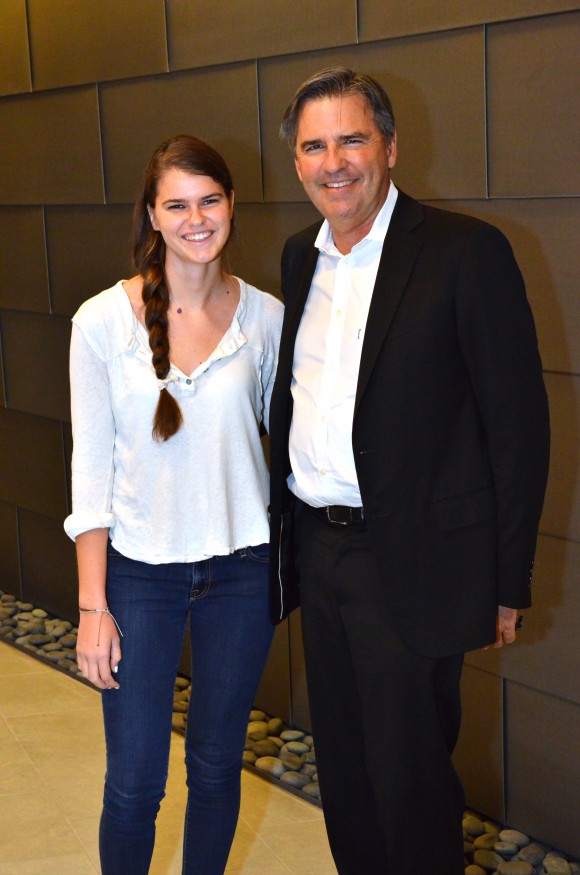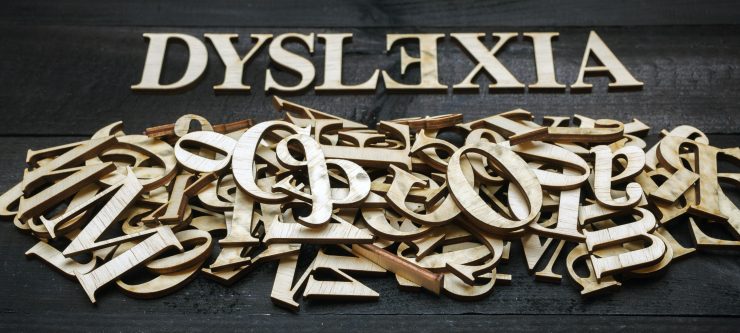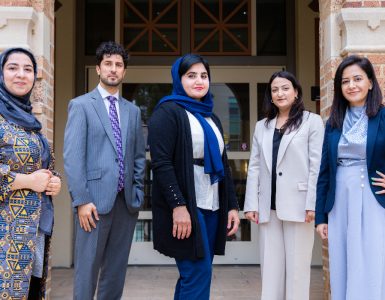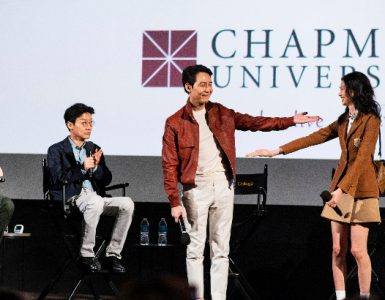Richard Bausch remembers what it was like when he was a child. “I didn’t know what I had and there was no way to find out. There was nothing in place in public school at that time — still isn’t — to help kids like me. I just had to struggle along — and eventually create my own way of reading and comprehending.”
Bausch, now an internationally acclaimed author and distinguished member of Chapman University’s English faculty, didn’t find out until much later that there was a reason why —especially when he tried to read aloud —certain letters of the alphabet made little sense and he couldn’t connect the sounds they were supposed to represent. And why it took him so long to read each word and sentence, which continually embarrassed him in class.
“I learned to compensate, partially, with joke-telling, storytelling and being the class clown,” he says now. Dyslexia —not officially diagnosed in Bausch, but which he is certain he has—is a specific learning disability that is neurological in origin, as defined by the International Dyslexia Association. It’s characterized by difficulties with word recognition and by poor spelling and decoding abilities. Dyslexics may struggle with reading comprehension and thus read less, often limiting their vocabularies and slowing their learning growth.
Despite all those challenges, Bausch overcame his difficulties. He now wields words so adeptly that he’s won innumerable prestigious literary awards, is considered a “master” of the short story, and is the sole editor of the prestigious Norton Anthology of Short Fiction. Bausch’s daughter, Lila, is also dyslexic. Bausch and his wife, Lisa Cupolo-Bausch, also a member of the Chapman English faculty, plunged into research on their own to try to help Lila.

Skye and Jamie Montgomery. Jamie is a business leader and philanthropist helping found the Chapman Dyslexia Summit.
“I’ve become something of a dyslexia encyclopedia now, with all the reading I’ve done,” says Lisa, “The term ‘learning disability’ just seems wrong. Lila is creative and intelligent —as is Richard. Just because their brains may work in a different way doesn’t mean what they have is a disability. Perhaps it’s a gift.”
A public interdisciplinary conference, the Dyslexia Summit, scheduled for Oct. 23 at Chapman, will explore the science of dyslexia as well as spotlight the fact that many people who’ve been diagnosed with dyslexia have moved past their reading challenges to become some of the most successful creators, entrepreneurs and thought leaders in the world.
The conference —now in the planning stages —will showcase highly successful “outside-the-box” thinkers, including Jack Horner, renowned paleontologist, MacArthur “Genius” Fellow and dyslexic; behavioral scientist Fumiko Hoeft, Ph.D., who will present on the “science of dyslexia;” and Intel Reader creator, activist and dyslexic Ben Foss, among many others. The conference is the brainchild of Chapman’s chancellor, Daniele Struppa, and Jamie Montgomery, managing director at March Capital Partners. Montgomery’s daughter Skye ’17, a Chapman student, is dyslexic.
“What Mr. Montgomery and I want to highlight is the burgeoning new science of dyslexia that is being her a disruptive creative streak, which can be harnessed for the good of society. The ideas we will discuss may end up being the foundation for a new ‘Center for Different Learning Abilities’ at Chapman —but in any case they will be stimulus for further conversations.”
Sally and Bennett Shaywitz, Yale University physicians and researchers whose Yale Center for Dyslexia and Creativity is regarded as a leader in the field of “uncovering and illuminating the strengths of those with dyslexia,” are advocates for bettering the lives of people with dyslexia.
Yet dyslexia is highly prevalent, the Shaywitzes’ research indicates. “If there were a way to evaluate every child, you’d find that one in five was dyslexic,” said Sally Shaywitz. “At first it was thought to be more prevalent in boys, but we found that the teachers were only identifying the most annoying kids in the class, who tended to be boys. Meanwhile the dyslexic girls were sitting there quietly, so many of them went unidentified.”
The Shaywitzes found that dyslexia is often lumped in with general “reading disabilities” in school special-education programs. California, to cite just one example, doesn’t recognize “dyslexia” as a separate category. The Shaywitzes are out to change that.
“If we carve out dyslexia from ‘special education’ in the schools, what’s left?” asks Bennett Shaywitz. “How do you reorganize that entire bureaucracy? That’s part of what we hope this summit will discuss.”
The Shaywitzes have identified a plethora of creative, successful people who have been very open about the fact that they’re dyslexic.
From Jay Leno, Whoopi Goldberg, Henry Winkler, Wendy Wasserstein, John Irving and many others in the arts and literature, to scientists, engineers, medical doctors, CEOs and more, these leaders are role models for anyone, not just people with dyslexia.
“What we want to show is that you can be dyslexic, identified as a ‘poor reader,’ and still have immense creativity and a very high IQ,” said Sally Shaywitz. A key reason for excitement about Chapman’s Dyslexia Summit “is that it will talk about how people with dyslexia have overcome the obstacles, and how that has made them stronger, more creative and more resilient,” Sally Shaywitz added.
“We intensely, passionately want people to ‘come out’ and talk about their lives with dyslexia. Because then people will say, “Wow, he’s dyslexic? She’s dyslexic? They’re so successful —that’s a great group to be part of.”





We need more Individualized Education Plans to uncover learner needs–then create programs to meet those needs.